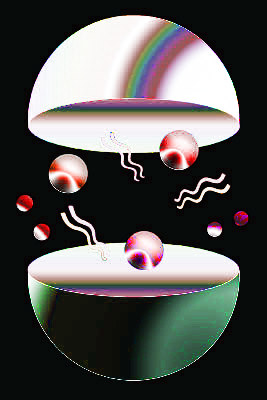Study seeks quark collision
 Researchers are looking decades down the line for later-than-next-generation power sources.
Researchers are looking decades down the line for later-than-next-generation power sources.
While nuclear fusion power is still in its absolute infancy, new research from Tel Aviv University and the University of Chicago looks at an even more futuristic technology - quark fusion.
Quarks are the tiny elementary particles that make up protons and neutrons.
In particle accelerators like the Large Hadron Collider, protons and neutrons are smashed together to reveal the quarks within.
According to new research published in the journal Nature, these quarks could be re-combined, releasing enormous amounts of energy.
The researchers’ calculations suggest quark fusion could produce eight times more energy than nuclear fusion with hydrogen atoms, if they can figure out how to do it.
Among the myriad challenges to overcome, future engineers will need to reliably make heavier quarks and keep them stable, to prove that quark fusion is a real physical process and not just mathematical theory.
The researchers hope that devices like the Large Hadron Collider can be used to test quark fusion soon, which could give a glimpse of what the next-next-generation power sources will be like.







 Print
Print